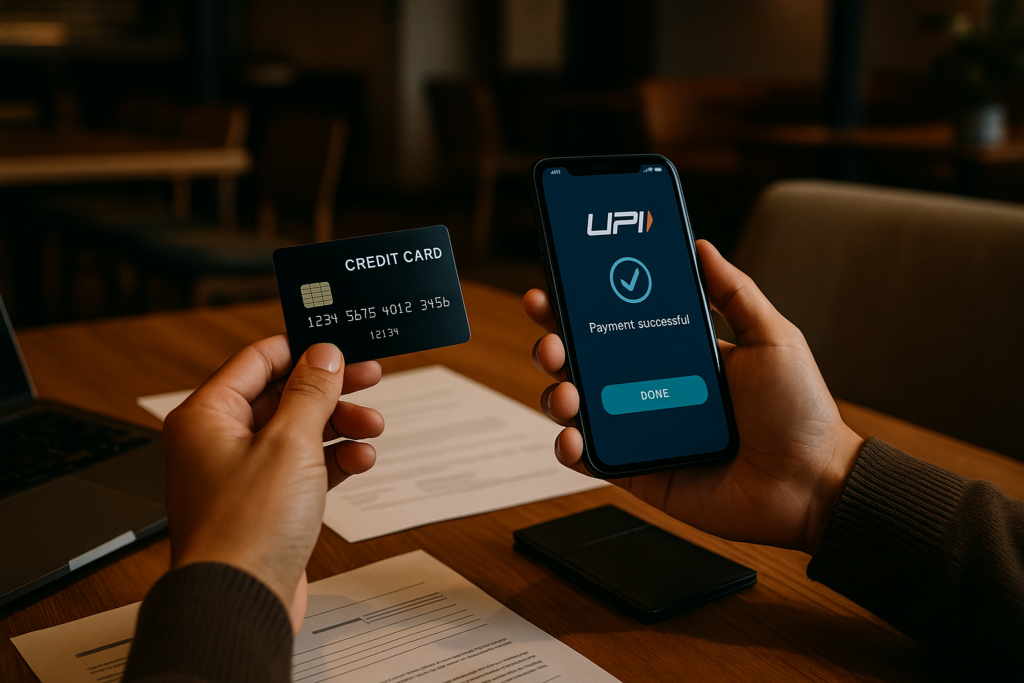Understanding UPI and Credit Card Payments
In today’s digital world, making payments has become faster and more convenient than ever before. Among the many options available, UPI (Unified Payments Interface) and credit cards are two of the most popular methods for digital transactions. While they serve the same fundamental purpose—making payments—they operate in very different ways. Knowing how each works, their benefits, and limitations can help you choose the best option for your needs.
What Is UPI?
UPI is a real-time payment system developed by the National Payments Corporation of India (NPCI). It functions as a direct bank-to-bank transfer platform allowing users to send and receive money instantly using a smartphone. UPI is accessed through various mobile apps, including Google Pay, PhonePe, Paytm, and many bank-specific apps.
Some key features of UPI include:
- Instant fund transfers 24/7, including holidays.
- No need to share bank details manually; you only need a virtual payment address (VPA).
- Low or zero transaction fees.
- Easy integration with multiple bank accounts through a single app.
What Is a Credit Card?
A credit card is a physical or virtual plastic card issued by banks or financial institutions that allows you to borrow funds up to a certain limit to pay for goods and services. You can pay the amount later, either in full or through EMIs (Equated Monthly Installments).
Major features include:
- Credit limit set by the bank based on your creditworthiness.
- Eligibility for rewards, cashback, and premium benefits.
- Protection against unauthorized transactions with EMI options and fraud protection.
- Monthly billing statement with detailed transaction history.
How Do They Work?
UPI Payments
To make a UPI payment, you link your bank account to a UPI app. You enter your VPA (like yourname@bank), or scan a QR code to initiate a transfer. The recipient’s VPA or QR code ensures secure and direct transfer of funds from your bank account to theirs. Payments are real-time and confirmed immediately.
Credit Card Payments
Using a credit card involves swiping, inserting, or entering card details online. The bank approves the transaction based on your credit limit and available credit. You settle your bill at the end of the billing cycle. For online purchases, the card number, expiry date, and CVV are required.
Key Differences: UPI vs. Credit Card
| Feature | UPI | Credit Card |
|---|---|---|
| Payment Method | Bank-to-bank transfer via mobile app & VPA | Credit offered by banks, physical or virtual card |
| Transaction Speed | Almost instant | Immediate for online; seconds to minutes for offline |
| Fees | Typically free or minimal | Varies; may include annual fees, interest, or processing fees |
| Security | Secure, with device and PIN authentication | Secure, with EMV chip, CVV, PIN, and fraud protection |
| Usage Scope | Peer-to-peer, merchant payments, bill payments | Shopping, bill payments, cash advances, travel bookings |
| Credit Facility | No, funded directly from bank balance | Yes, credit limit provided by bank |
Pros and Cons
Advantages of UPI
- Instant and convenient transfer process.
- Zero or minimal transaction fees.
- Simple to use with just a VPA or QR code.
- No need for physical cards or cash.
Disadvantages of UPI
- Limited to bank-to-bank transactions and peer payments.
- Requires a smartphone and internet connection.
- Potential risks if device or app security is compromised.
Advantages of Credit Cards
- Widely accepted across online and offline merchants.
- Eligibility for rewards, cashback, and exclusive offers.
- Provides credit facility, useful for emergencies.
- Fraud protection and dispute resolution mechanisms.
Disadvantages of Credit Cards
- Interest charges if bills are not paid on time.
- Annual fees in some cases.
- Potential for overspending and debt accumulation.
- Processing fees for certain transactions like cash withdrawals.
Choosing Between UPI and Credit Card
Your choice depends on your financial habits and needs. For quick, everyday payments, especially peer-to-peer or QR code-based transactions, UPI is a great choice. If you prefer building credit, earning rewards, or making large purchases, a credit card might be better.
Many users opt for both, leveraging the advantages of each. For instance, using UPI for small, frequent payments and credit cards for big-ticket buying or online shopping with reward benefits. To explore more options and compare various credit cards, you can visit Find My Card.
FAQs
1. Is UPI safe to use for online transactions?
Yes, UPI employs multiple layers of security like device authentication, PIN, and device encryption. However, users should ensure they download apps from trusted sources and avoid sharing PINs.
2. Can I use my credit card for UPI transactions?
No, UPI transactions are directly linked to your bank account and do not work through credit cards. Credit cards are mainly for online and offline retail payments.
3. Which is better for cashback — UPI or credit cards?
Credit cards often offer better cashback and rewards for shopping, dining, and travel. UPI is more about free, instant transactions—ideal for day-to-day peer payments and utility bills.
4. Do both UPI and credit cards have annual charges?
UPI is generally free. Most credit cards, especially premium ones, come with annual fees, but many offers and cashback can offset those costs.
Conclusion
Both UPI and credit card payments have transformed the way we handle money. Understanding their differences helps you use them more effectively. For everyday small payments or bill splitting, UPI is simple and cost-effective. For larger purchases, rewards, and building credit, credit cards offer significant benefits.
To get started and find the best credit card suited to your spending habits, explore our detailed credit card comparison tool. Keep your financial transactions secure and stay informed about the latest payment options to make smarter financial decisions.

